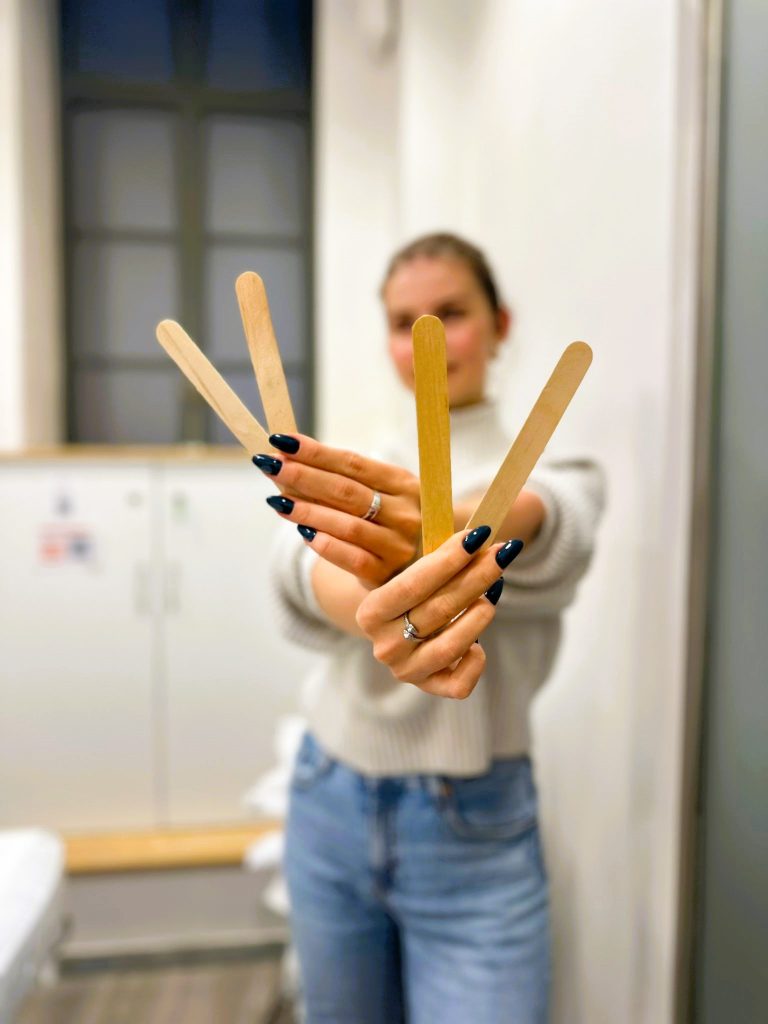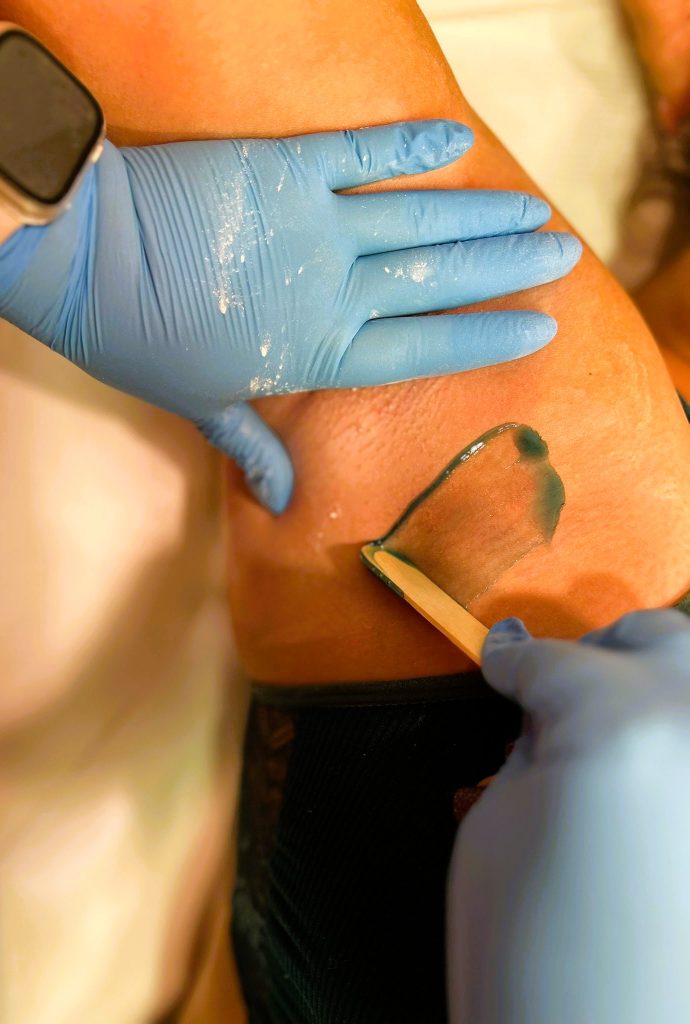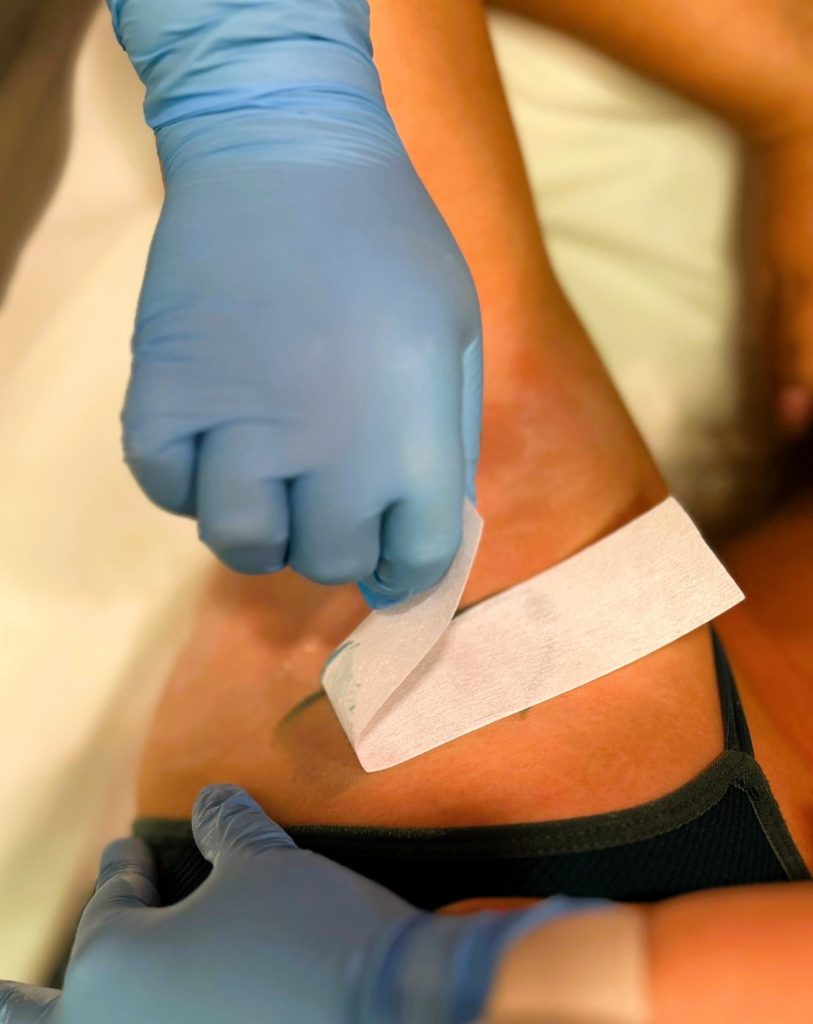What Is the Importance of Depilation Direction ? Why Does Technique Impact the Effectiveness of the Hair Removal?
Blog BackTable of Contents:
- Depilation Direction and Hair Structure
- Waxing – Importance of Direction During Application and Removal
- Sugaring – Recommendations for Movement Direction
- Shaving – Proper Technique
- Electrical Depilation – Epilators and Depilators

Depilation is a crucial aspect of skincare for many individuals, and the method of its execution significantly affects both the results and comfort. The direction in which we remove hair directly influences the effectiveness of the treatment, the longevity of the results, and the risk of skin irritation. Various depilation methods, such as waxing, sugaring, or shaving, require different techniques and movement directions. In this article, we will explore why the direction of depilation matters and how the technique influences the final effect based on the chosen method.
Depilation Direction and Hair Structure
To understand why the direction of hair removal is so important, it's essential to examine the structure and growth pattern of hair. Hair grows at a specific angle and has its natural orientation, while the hair follicle's structure is designed to support growth in one direction. Removing hair in the same or opposite direction of its natural growth can significantly impact the depilation process.
Incorrectly angled depilation can lead to hair breaking at the surface of the skin rather than being removed along with the follicle. This results not only in less durable effects but also increases the risk of ingrown hairs and irritation.
Waxing – Importance of Direction During Application and Removal
Waxing is one of the most commonly used depilation methods, allowing for hair removal for a period of 2 to 5 weeks. However, the effectiveness of this method is closely tied to proper technique, particularly regarding the direction of application and removal of wax.

Wax Application: Wax should always be applied in the direction of hair growth, which allows for better adhesion of the hairs to the wax and minimizes the risk of breakage.
Wax Removal: The wax is pulled off in the direction opposite to hair growth, enabling the hair to be fully removed along with the follicle, ensuring a longer-lasting effect and reducing the risk of ingrown hairs. Incorrect technique—such as pulling the wax in the same direction it was applied—will result in incomplete hair removal, leading to discomfort and the need for reapplication.
Additionally, when removing the wax, it's important to perform a quick, smooth motion parallel to the skin's surface, which minimizes pain and reduces the chance of irritation.

Sugaring – Recommendations for Movement Direction
Sugaring is a depilation method that differs from waxing in both technique and movement direction. This hair removal method originates from the Middle East and is gaining popularity, especially among individuals with sensitive skin.
Sugaring Application: The sugar paste is applied against the direction of hair growth. This allows for better adhesion to the hair surface, enabling effective removal.
Sugaring Removal: The paste is removed in the direction of natural hair growth. This technique minimizes the risk of hair breakage and significantly reduces the likelihood of ingrown hairs. Moving in the direction of hair growth is more natural for the hair follicle's structure, making the treatment less painful and more effective.
Shaving – Proper Technique
Shaving is the fastest hair removal method, but technique and direction also play a significant role, particularly concerning skin comfort and final results.
Shaving with the Direction of Hair Growth: Shaving in the direction of hair growth minimizes the risk of irritation and cuts. However, this method is less precise, as the blade does not cut the hair as close to the skin. This results in faster regrowth and visible "dots" just beneath the skin's surface.
Shaving Against the Grain: This method allows for a more thorough hair removal but also increases the risk of irritation. Hair cut against the growth direction is more likely to grow back into the skin, leading to inflammatory conditions and painful bumps.
For individuals with sensitive skin or a tendency for ingrown hairs, shaving in the direction of hair growth or gentle shaving at an angle may be a better choice, depending on the body area and skin type.
Electrical Depilation – Epilators and Depilators
Depilation using electrical devices, such as depilators or IPL epilators, requires a different approach to hair removal direction.
Depilators: Mechanical depilators grab and remove hair along with the follicle, allowing for effects that last several weeks. In this case, it's important to move the device perpendicular to the skin and against the direction of hair growth. This enhances the device's ability to "grab" the hairs, minimizing pain and increasing effectiveness.
IPL (Intense Pulsed Light): IPL depilation works by exposing the hair to a beam of intense light, which penetrates the hair follicle and destroys it, gradually inhibiting hair growth. Here, direction does not matter, as the device does not mechanically remove hair but directly targets its structure with light. However, depending on the manufacturer, it's recommended to use IPL evenly and systematically to effectively cover all skin areas.
We hope that these tips will make depilation not only more effective but also more enjoyable. Regardless of the method you choose, remember that the right technique is key to achieving smooth skin without irritation. Now that you know the ins and outs of depilation direction, you can approach your skincare routine like a true expert. May every movement bring you satisfaction, and may the results amaze you longer than ever!








